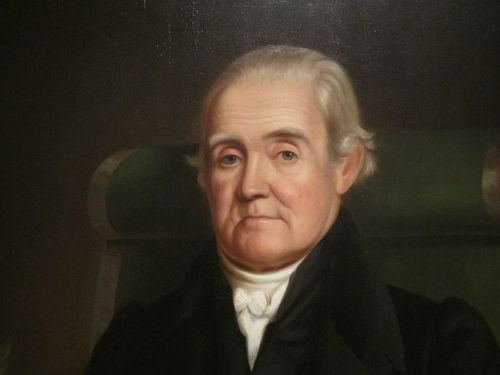
Inkorn terms in The Meaning of Everything
By Quinton Bent
In 1604, “som one learned did go out gathering”, and eventually produced what the entire literary universe was apparently waiting for. Robert Cawdrey, a schoolmaster from Oakham in Ruthland offered “ Edward Weaver, of the great north door of St. Paul’s- a slender octavo book of 120 printed pages entitled A Table Alphabeticall, Conteyning and teaching the true writing and understanding of hard usuall English words, borrowed from the Hebrew, Greek, Latin or French &c.” (Winchester). This book gathered up 3,000 “hard words” and was edited by Cawdrey for quite some time. By todays standard, this book is a more synonymicon than true dictionary. The definitions were quite brief, none-the-less, Cawdrey had produced the first organized list for England’s gentlewomen and unskillful persons. This list was useful because the words it contained were primarily “inkhorn terms” or borrowed terms. Only the loftiest members of London high society liked to pepper their salon conversations with these terms (Winchester). Inkhorn terms have become very common in today’s society. Much of our “slang” can even be classified as inkhorn terms. The inclusion of Inkhorn terms in our language was the start of a basic vocabulary shift with lexicon from other languages. This inclusion of other languages raised a question: is English about to enter another shift as creole enters our society?
The first two-hundred years of Anglo-Saxon control of Britain are almost fully unsupported by contemporary documentary evidence, the evidence being mainly archaeological, and despite being more speculatively, toponymical, or to be gathered from later writers such as Bebe. The earliest people to arrive were in East Anglia and the southeast, with a gradual spread along the Thames valley, into the Midlands and northwards (Hogg 27). Because of this, Angle may have referred to a tribe, at the same time as Saxon referred to a tribal confederacy.
The term “Germanic” is used to describe a group of closely related languages which were spoken in northern Germany and southern Scandinavia in the first one hundred years before Christ. The first Germanic material is accessible in the writings of classical authors. A very significant source of information about early Germanic is provided by borrowings into Finnish, a non-Indo- European language. The Finnish language had changed very little phonetically since that time, so that a word like ‘ring’ is nowadays quite close to the Proto-Germanic form which it was borrowed; we modernize the form as bring (Hogg 29).
Creole is one of the main old English dialects. Haitian Creole comprises parts from both its branch of French language and African languages through the Romance group of Indo- European languages. DeGraff suggested that creole was made around the same time as the French society of Saint Domingue was instituted in 1659 (DeGraff 90). Throughout this era, the colony was a predominantly sugar based economy. Prior to this, the economy was based on tobacco and cotton. The transition to a sugar market produced a beneficial location creole to come about. At the time of tobacco manufacturing, Haiti was comprised of the working whites (the engages), slaves and men of colour, in equalized magnitudes, as the coloured people had declining interaction with local French-speaking Caucasians, the language started to transition. Juxtaposed to the African tongues, a type of orthodox French and “langues d’oil” were expressed during the 18thcentury in Saint-Domingue, along with the other French settlements of New France and French West Africa. Slaves that barely conversed with other slaves tried to study French (Hogg 234). With Slaves continuously being imported, the language slowly turned out to be official and became a separate language to French. The language became used by all those born in what is now Haiti and it was also picked up by the whites. Hogg wrote, “While over 90% of the Haitian Creole vocabulary comes from French origin, the two languages are mutually incoherent” (Hogg 123). This is because the two grammars are distinctive. Also, both French and Creole have faced major semantic alteration. Words that meant one thing in the 17thcentury have either been replaced or changed in both languages. An example of this is “Ki jan ou rele?” (what is your name?) parallels to the French “Comment vous appelez-vous” (Hogg 126)? despite the average French speaker not being able to apprehend it, every word in the phrase is of French beginning.
The theory of relexification helps to describe creoles because in linguistics, relexification is,” a system of language change in which one language changes much of its lexicon, including its basic vocabulary, with the lexicon of another language” (Hogg 154). A hypothesis was made that all creole languages achieve their grammar from the medieval Mediterranean Lingua Franca, this was proposed at the end of the 1950s (Degraff 34). This was later debated that the grammar of Haitian Creole is substratum, created when African slaves re-formed their language with French vocabulary because of many resemblances between Haitian and their African tribe.
Robert Cawdrey’s introduction of inkhorn words into English society paved the way for languages from different cultures to be integrated into our society. This integration of language into our society was considered to be a major shift in our lexicographical history. One might say that the introduction of creole into our society marks another major shift due to the theory of relexification.
References
DeGraff, Michel (2005). “Linguists’ most dangerous myth: The fallacy of Creole Exceptionalism” (PDF). Language in Society. 34 (4): 533– 591. doi:10.1017/S0047404505050207. Accessed on 15 Novemeber 2018
Hogg, Richard M. The Cambridge History of the English Language. Cambridge: Cambridge UP, 1998. Print.
Winchester, Simon. The Meaning of Everything The Story of the Oxford English Dictionary. Oxford University Press, 2018.